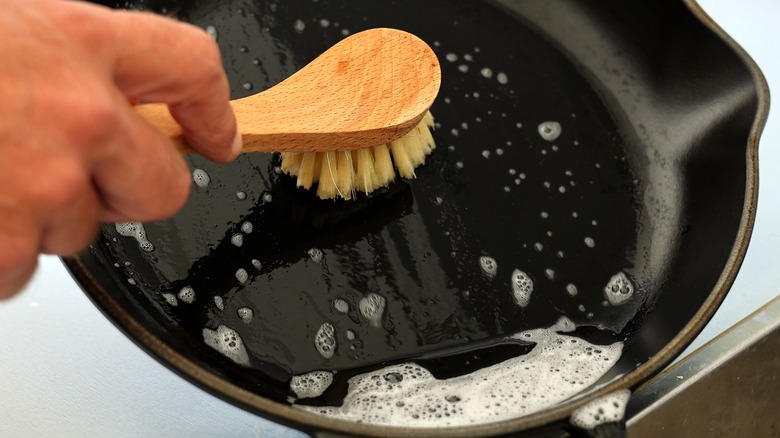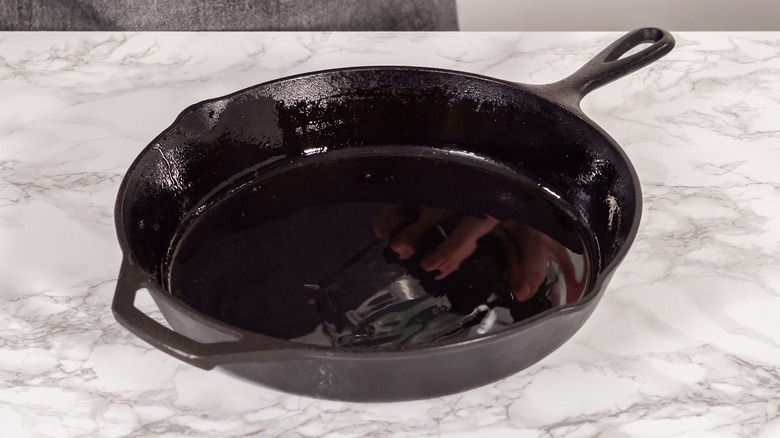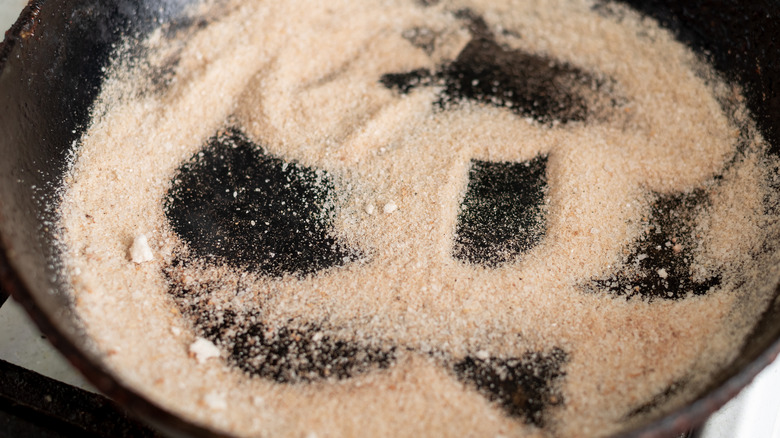Here's Why You Should Never Soak Your Cast Iron Pan
Cast iron cookware gives you an awesome combination of utility and durability. It's one of the most versatile kitchen tools that is made to last practically forever, and you may have noticed how much more quickly food cooks in a cast iron pan. While this type of cookware is not delicate by any means, you still have to take special care of it so you're not shortening its lengthy lifespan. And that means avoiding soaking it or placing it completely underwater.
In fact, you should probably avoid using dish soap as well, except when absolutely necessary. Although dish soap is not completely off limits, it can cut into the oily coating that forms after you season the pan. However, you can always season it again after rinsing it off completely. While this advice may seem counterintuitive, you can do more damage to the pan by soaking it because, like most other metals except for aluminum, it will rust. Aside from being unsightly, rust is not something you would want to cook your food in.
How to keep the nonstick surface
Although you might look at the heavy-duty metal and wonder how to remove cooked-on food, the trick to remember is that if you season the pan correctly, then there should be no worries. The oily surface should keep your food from sticking to the pan.
How does this work? When you first get your cast pan, you'll need to cover it with vegetable oil not just on the inside but on the exterior surface as well. If you're worried about making a mess, you can place your pan on a cutting board, soak a paper towel or a clean cloth with the oil and apply it all over, just as you would grease a cookie sheet before baking. Or you can pour the oil directly onto the pan (inside and out) and spread it with a paper towel — just make sure the whole skillet is covered in oil. From there you can place your pan in the oven at 350 degrees for roughly 60 minutes. This process makes it possible for you to easily clean your pan after cooking without soaking or immersing it.
What to do instead
There are some additional steps you can take if you find a stubborn layer of food that won't come off. You can use a pan scraper by itself, or if that's not enough to remove food or stains, then you can boil some water in the pan until everything starts to loosen up and then use the scraper after pouring the water out.
Yet another effective strategy is to use baking soda or salt and a wet dish towel to scrub the pan after rinsing out any leftover food residue. Baking soda, being a natural substance, safely scrapes away stains and food without the worry of chemical residue or odors, as long as you rinse the pan thoroughly once you're finished. After that, be sure to season your pan again since most of the oil has been removed from the interior – if not all of it. One other way to deal with the issue of cleaning is by employing some prevention. Along with periodic re-seasoning, make sure you fully heat the pan up before you start cooking.


